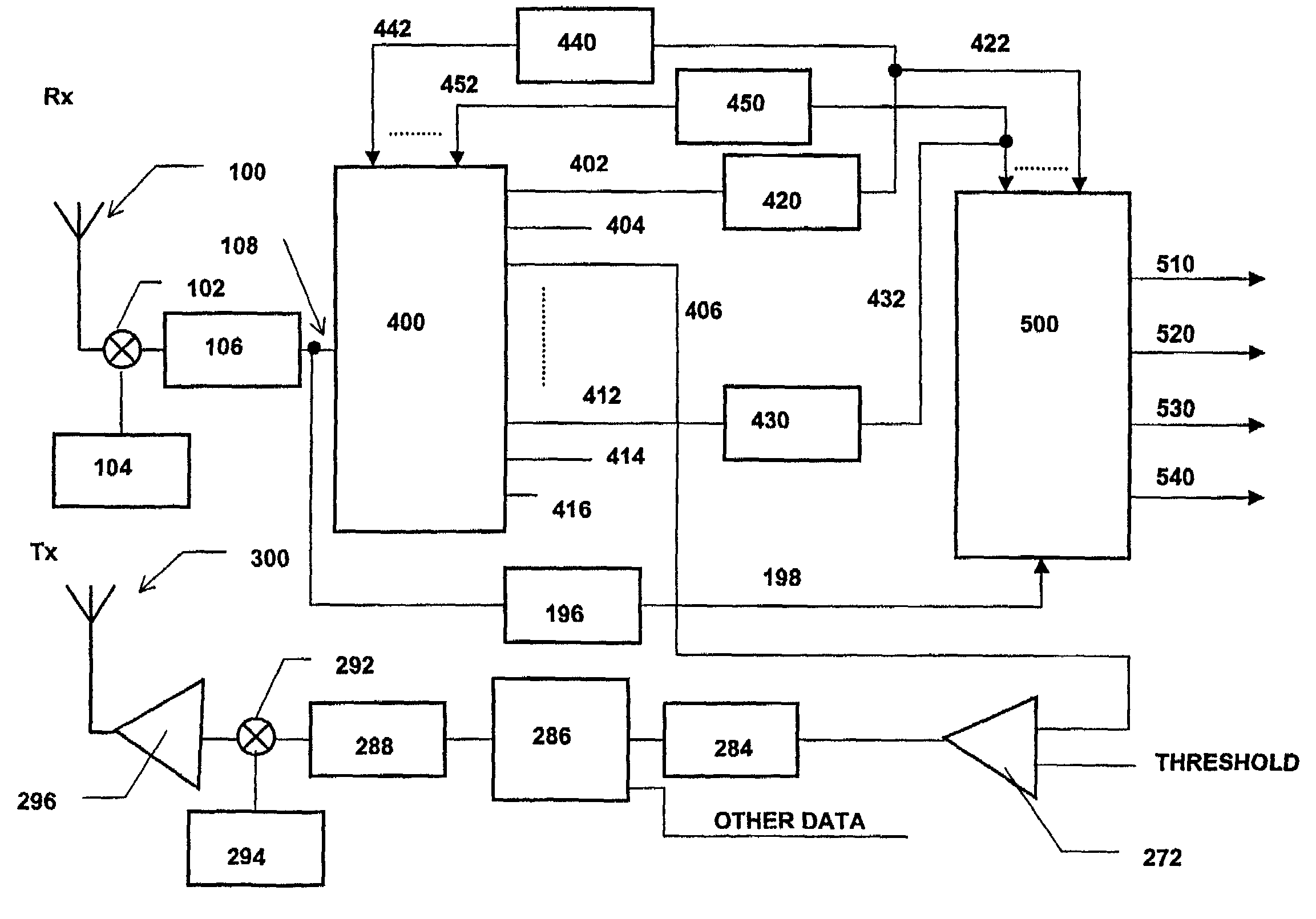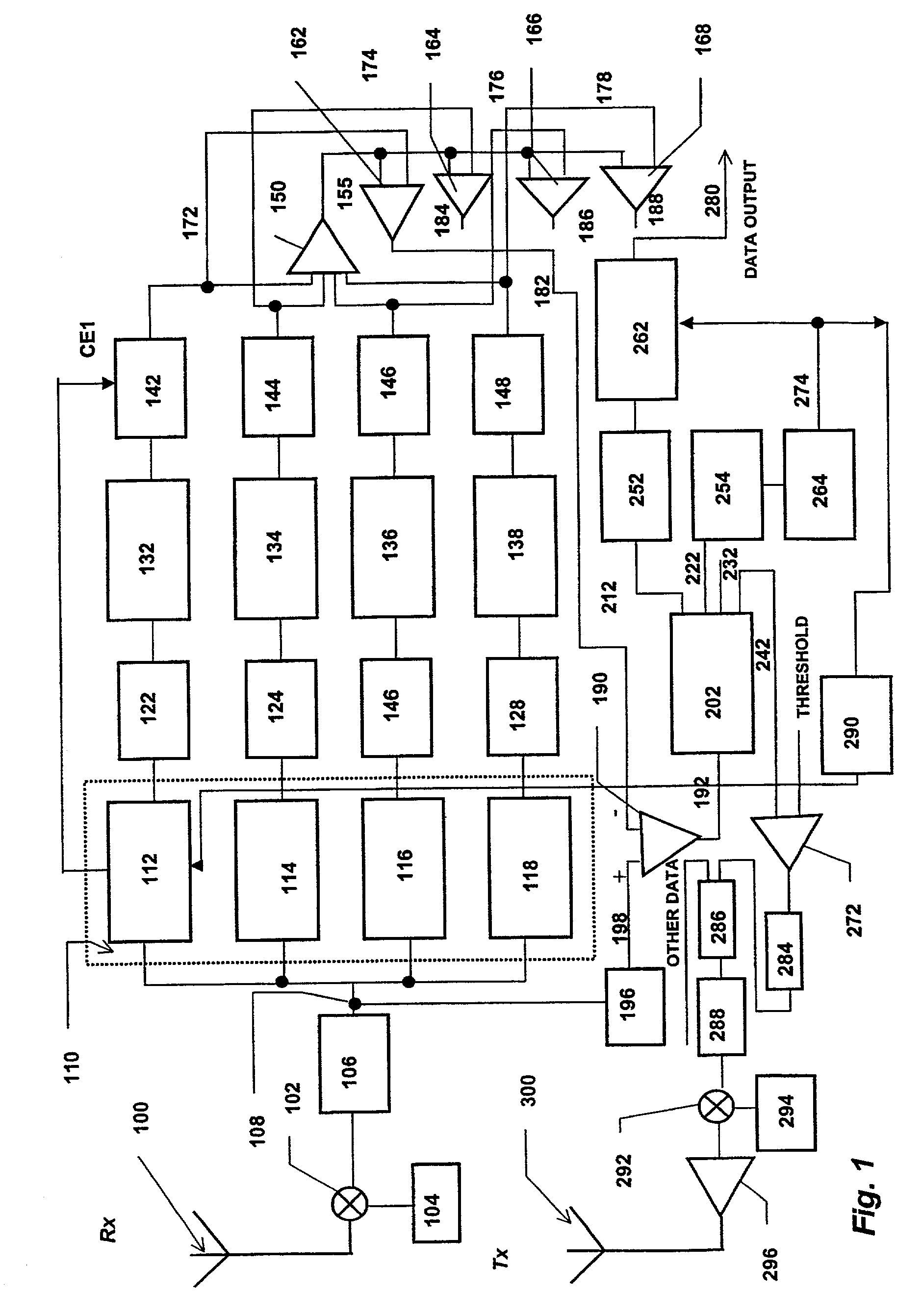Method for improved extraction in CDMA systems
- Summary
- Abstract
- Description
- Claims
- Application Information
AI Technical Summary
Benefits of technology
Problems solved by technology
Method used
Image
Examples
Embodiment Construction
[0027]In accordance with the present invention, a first iteration of interference cancellation or joint detection is performed on incoming signals on the basis that the bit rates for every signal are the same as they were for the same signal in the previous frame. Although this assumption may not be true for all of the signals, it should be true for the vast majority of signals whenever a large number of signals are present. If the frame rate is correct, for example, for 90% of signals, then nominally 90% of the interference would be cancelable. The unsuccessful attempt to cancel the remaining 10% of interference would add a further 10%, leaving the interference at 20% in the idea case. This provides, a 7 dB reduction in interference—a very useful start.
[0028]It will be appreciated that if the number of active signals is small then the operation of interference cancellation or joint detection will not be needed anyway.
[0029]As discussed above, in order to demodulate a CDMA signal ef...
PUM
 Login to View More
Login to View More Abstract
Description
Claims
Application Information
 Login to View More
Login to View More - R&D
- Intellectual Property
- Life Sciences
- Materials
- Tech Scout
- Unparalleled Data Quality
- Higher Quality Content
- 60% Fewer Hallucinations
Browse by: Latest US Patents, China's latest patents, Technical Efficacy Thesaurus, Application Domain, Technology Topic, Popular Technical Reports.
© 2025 PatSnap. All rights reserved.Legal|Privacy policy|Modern Slavery Act Transparency Statement|Sitemap|About US| Contact US: help@patsnap.com



